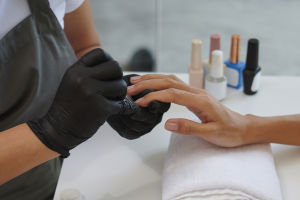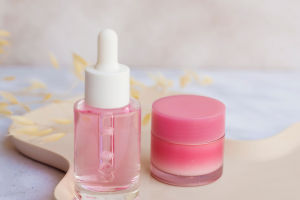Lykkers who enjoy days by the sea often notice how skin feels different after a swim. That fresh tightness, that glow, even a slight roughness—it’s not just the sun or the breeze.
The real star here is sea salt. Rich in minerals and used for centuries in natural treatments, it can both support and challenge skin health. Let’s explore how to make the most of its benefits while keeping your skin protected and happy.
Positive Effects of Sea Salt on the Skin
Natural Exfoliation
The fine crystals in sea water gently scrub away dead skin cells. This natural exfoliating action helps skin feel smoother and look brighter. It also supports cell renewal, which can be especially helpful for those experiencing uneven texture or small bumps.
Helps Keep Skin Clear
Thanks to its purifying nature, sea salt can reduce buildup on the skin. It supports cleaner pores, which may help manage blemishes or breakouts. Its gentle cleansing qualities can refresh the skin, especially in warmer climates or after time in polluted environments.
Skin-Firming Properties
Sea water can promote a temporary tightening effect. This happens through fluid balance between the salt and skin layers. As a result, the skin may look more toned and smooth. This effect is often appreciated in body treatments at spas by the sea.
Soothing for Some Conditions
The magnesium and other elements found in sea salt may ease certain skin discomforts. When soaked in salty water, skin may experience less itch or redness. This can offer some relief for people dealing with sensitive or reactive skin types.
Supports Detox and Circulation
Soaking in sea water can stimulate blood flow and encourage skin oxygenation. This circulation boost may help flush out impurities through natural processes. The result is a revitalized appearance, especially after a long day outdoors.
Risks of Overexposure to Sea Salt
Increased Dryness
Prolonged contact with sea salt can pull moisture away from the skin. This leads to tightness, flaking, and possible discomfort. When the skin's moisture barrier is reduced, it becomes more vulnerable to environmental stress.
Sensitivity and Discomfort
Sea salt can irritate already delicate or damaged skin. Small cuts, recent shaving, or dry patches may sting after contact. Without proper care, the irritation can increase, especially under intense sunlight or wind.
Higher Sun Sensitivity
Salt can leave the skin more exposed to ultraviolet rays. When natural oils are removed, the outer layer of skin becomes less able to defend itself. This increases the likelihood of burns or early skin aging.
Worsening of Skin Conditions
For some, salty water can worsen discomfort linked to existing skin concerns. Dryness or flaking may become more pronounced if the skin lacks hydration after swimming. Redness and rough patches can also become more visible.
Weakened Skin Protection
Sea salt can wear down the skin’s natural shield, made of essential oils. This protective layer helps keep hydration inside and external stress out. Without it, skin may lose balance and feel irritated more easily.
How to Protect Skin When Exposed to Sea Salt
Hydrate Before and After
Using a nourishing cream before going into the sea creates a buffer on the skin. After swimming, rinsing with fresh water is essential to remove any residue. Follow up with a rich lotion to seal in moisture and restore softness.
Use Broad-Spectrum Sunscreen
Applying sun protection before sea exposure is key. Choose one that’s water-resistant and includes skin-friendly antioxidants. This helps shield the skin from light damage while maintaining balance.
Limit Time in Salt Water
Spending long periods in salty water may overwhelm sensitive skin. Taking regular breaks and rinsing off between swims can reduce risk. This is particularly useful for those with skin prone to dryness or flare-ups.
Apply Soothing Products
Post-sea care can include ingredients like aloe vera, calendula, or panthenol. These support skin recovery and reduce tightness or redness. A gentle skincare routine makes a big difference after salty exposure.
Watch Skin’s Response
Each person’s skin reacts differently. Paying attention to how it feels and looks after swimming can guide future care. If discomfort continues, a skincare professional can offer tailored advice.
To Conclude
Sea salt can be a refreshing boost for the skin, offering natural cleansing, gentle toning, and temporary relief for some concerns. Yet, without mindful care, it may also leave the skin dry, irritated, or stressed. Lykkers who love beach days can enjoy the best of both worlds by adopting simple habits: hydrate, protect, rinse, and soothe. That way, skin stays glowing and balanced long after the waves roll out.


